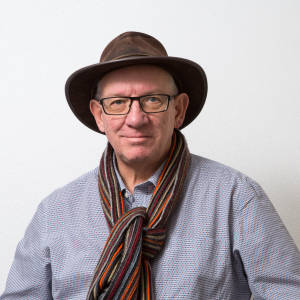Trainstation Klimmen-Ransdaal
Klimmen-Ransdaal station dates from 1913 (commissioned in 1914).
The name of this beautiful South Limburg station is actually a bit misleading. The station is on the outskirts of Ransdaal but has as first name Klimmen, a village a few kilometers northwest of Ransdaal. For that reason, the station building is on the other side of the track; on the Klimmen side, near the hamlet of Termaar. This seems illogical, but Klimmen was (and still is) bigger than Ransdaal and therefore the station was directed to the former location. The fact that the track and the station lie at Ransdaal is purely related to the hilly landscape in South Limburg. Ransdaal had a somewhat more favorable location than the higher ground for the construction of the track (the name of the village says it all…) Climbing. The station is nevertheless at an altitude of almost 110 meters and is, therefore, one of the highest stations in the Netherlands. Only the stations along the Heerlen-Kerkrade line and the former Simpelveld station are even higher.
The station building is very similar to that of the neighboring Voerendaal. Both buildings are designed simultaneously and in one specification. Yet it is not immediately a smaller version of "Voerendaal" to call, although at first glance this seems to be the case. Whoever looks further also sees the big differences. This station building, therefore, has a clear identity of its own. The biggest differences are (of course) the size and the fact that this building only has one side wing. In addition, the building only has three top façades and as many chimneys, while the station building in Voerendaal has four.
The front of the station building is most reminiscent of a smaller variant of the Voerendaal station. Here too, there is a middle section of two storeys with top gables at the ends. The upper floor is also white plastered and half-timbered in the top façades. The building is not only considerably smaller, but it is also more asymmetrical in shape. The two top facades are now also clearly different. The left top façade is slightly wider, the right one is somewhat lower.
The platform façade only has one top façade. This can be found in the middle of the middle section. Here the top façade is a sort of crowning of a part that starts with a square extension on the ground floor. The roof of this bay window also forms a balcony here. The façade also protrudes a considerable part on the upper floor and then ends in the top façade.
The station building has the same striking combination of shield and saddle roofs, this time somewhat differently than in Voerendaal and supplemented with the aforementioned wolf roof. There are three chimneys on the roof, two in the ridge of the roof of the middle section and one between the middle section and the side wing. This last chimney had the same shape in the past as the other two and also reached the same height. Unfortunately, she was considerably shortened in the sixties, with the most striking part disappearing. The building has had a fourth chimney for several years. Although it is a modern piece of metal, people have clearly looked at the shape of the building and the other three chimneys. Just a pity that it has no white color, but perhaps this would not have been possible ...
Originally there were two waiting rooms in the station building. One waiting room was intended for both second and third-class travelers, and there was a separate waiting room for the weekly cardholders (miners). This last waiting room was located in the side wing. This station also had no waiting room for first-class travelers. The baggage and goods department was located at the back left of the building. To this end, both the side and the platform façade were fitted with large wooden (sliding) doors with a roof above them. The sliding doors in the sidewall, with the awning above it, have long since disappeared. This section was then bricked up so that the right-hand side facade - with the exception of a small rectangular window - became a virtually blind facade. The wooden doors in the platform façade are - remarkably enough - no sliding doors. These are still there and the canopy above these doors is still unaffected.
Since 2006, Veolia trains stop at the station. For the travelers from Ransdaal and Klimmen, this meant a huge improvement, since then (again) a train stops twice per hour and per direction. In the previous years, travelers had to make do with one train per hour per direction. For a while it even looked like this station would be canceled. In the early 1990s, the Dutch Railways wanted to close no fewer than nine stations in Limburg, including Klimmen-Ransdaal. In the end that did not happen, but instead, the timetable on the Heerlen-Maastricht route was halved.
The station building has since lost its original function but is now safely on the National Monument List.

Comments
Sign in or get an account to comment.


